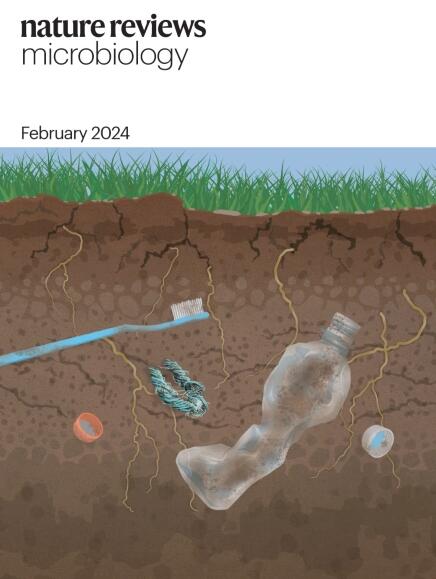生物膜的有益应用。
IF 69.2
1区 生物学
Q1 MICROBIOLOGY
引用次数: 0
摘要
许多微生物以生物膜的形式生存。虽然它们在医疗部门令人恐惧,但由非致病性生物体组成的生物膜在许多应用中可能非常有益,包括生产散装和精细化学品。生物膜系统是天然的保持器,其中生物催化剂可以随着时间的推移适应和优化其代谢以适应不同的条件。生物膜的粘附特性使其可用于连续系统,其中水力保留时间比生物催化剂的倍增时间短得多。此外,在生物膜中生长的生物体的弹性,以及从催化活性中解耦生长的潜力,提供了广泛的机会。使用潜在的自我推进的全细胞生物催化剂与连续系统一起工作的能力吸引了从应用微生物学到材料科学,从生物工程到工艺工程等一系列学科的兴趣。随着越来越多的应用被探索,有益生物膜领域正在迅速发展,对可持续和生物基解决方案和工艺的需求激增正在加速该领域的进步。本文综述了有益生物膜和应用生物膜的研究课题、面临的挑战、应用和未来发展方向。本文章由计算机程序翻译,如有差异,请以英文原文为准。


Beneficial applications of biofilms
Many microorganisms live in the form of a biofilm. Although they are feared in the medical sector, biofilms that are composed of non-pathogenic organisms can be highly beneficial in many applications, including the production of bulk and fine chemicals. Biofilm systems are natural retentostats in which the biocatalysts can adapt and optimize their metabolism to different conditions over time. The adherent nature of biofilms allows them to be used in continuous systems in which the hydraulic retention time is much shorter than the doubling time of the biocatalysts. Moreover, the resilience of organisms growing in biofilms, together with the potential of uncoupling growth from catalytic activity, offers a wide range of opportunities. The ability to work with continuous systems using a potentially self-advancing whole-cell biocatalyst is attracting interest from a range of disciplines, from applied microbiology to materials science and from bioengineering to process engineering. The field of beneficial biofilms is rapidly evolving, with an increasing number of applications being explored, and the surge in demand for sustainable and biobased solutions and processes is accelerating advances in the field. This Review provides an overview of the research topics, challenges, applications and future directions in beneficial and applied biofilm research. Beneficial biofilms are in demand for diverse applications ranging from the production of specialized compounds to roles in agriculture and bioremediation. In this Review, Gescher and colleagues provide an overview of the applications, challenges and future of beneficial biofilms.
求助全文
通过发布文献求助,成功后即可免费获取论文全文。
去求助
来源期刊

Nature Reviews Microbiology
生物-微生物学
CiteScore
74.00
自引率
0.50%
发文量
149
审稿时长
6-12 weeks
期刊介绍:
At Nature Reviews Microbiology, our goal is to become the leading source of reviews and commentaries for the scientific community we cater to. We are dedicated to publishing articles that are not only authoritative but also easily accessible, supplementing them with clear and concise figures, tables, and other visual aids. Our objective is to offer an unparalleled service to authors, referees, and readers, and we continuously strive to maximize the usefulness and impact of each article we publish. With a focus on Reviews, Perspectives, and Comments spanning the entire field of microbiology, our wide scope ensures that the work we feature reaches the widest possible audience.
 求助内容:
求助内容: 应助结果提醒方式:
应助结果提醒方式:


